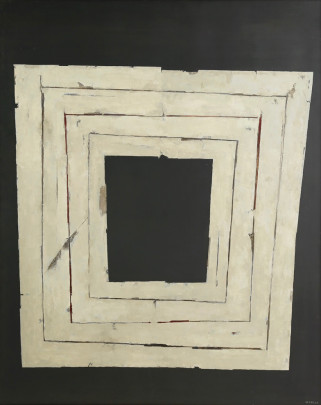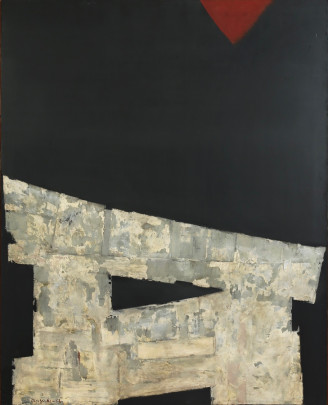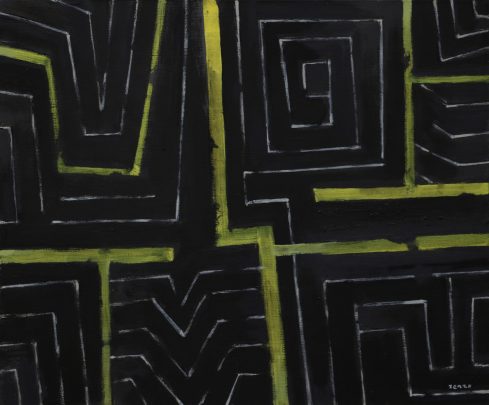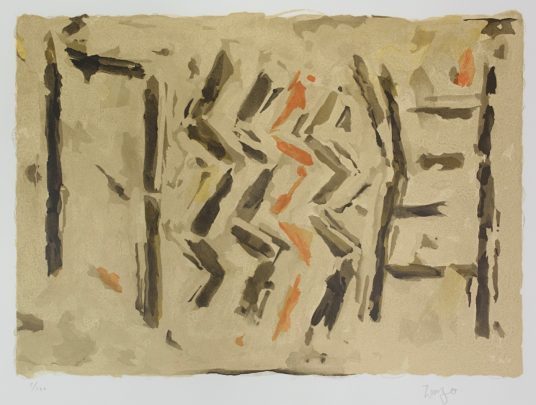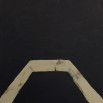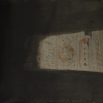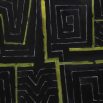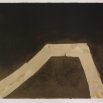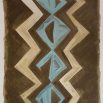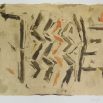坂本善三 SAKAMOTO Zenzo 1911–1987
- 作品1(形) 1965年 油彩・キャンバス 162x130.5cm 販売済み
Work 1 (Form) 1965 oil on canvas 162x130.5cm sold
出展歴:1965年「第33回独立展」(児島賞)、東京都美術館ほか / 1985年「坂本善三展」熊本県立美術館 / 1997-98年「没後10年 坂本善三展」練馬区立美術館ほか
Exhibitions: 1965 'The 33rd Independent Exhibition' (awarded Kojima Prize) Tokyo Metropolitan Art Museum and others / 1985 'Sakamoto Zenzo' Kumamoto Prefectural Museum of Art / 1997-1998 ' Zenzo Sakamoto - 10 Years Anniversary After His Death' Nerima Art Museum, Tokyo and others - 構築 1961-62年 油彩・キャンバス 162.5x130.5cm 販売済み
Kochiku (Construction) 1961-62 oil on canvas 162.5x130.5cm sold
出展歴:1965年「第33回独立展」、東京都美術館ほか / 1985年「坂本善三展」熊本県立美術館
Exhibitions: 1965 'The 33rd Independent Exhibition' Tokyo Metropolitan Art Museum and others / 1985 'Sakamoto Zenzo' Kumamoto Prefectural Museum of Art - 空間 1970年頃 油彩・キャンバス 33.5x24.5cm
Space c.1970 oil on canvas 33.5x24.5cm - 構造 1970年頃 油彩・キャンバス 24.5x33.5cm 販売済み
Structure c.1970 oil on canvas 24.5x33.5cm sold - 空間 油彩・キャンバス 33.4x24.3cm
Space oil on canvas 33.4x24.3cm - 黒の構成 1976年頃 油彩・キャンバス 38x45.5cm
Composition in black c.1976 oil on canvas 38x45.5cm - 城 1984 リトグラフ・紙 Ed. 84 40x48cm(イメージサイズ) 販売済み
Castle 1984 lithograph on paper Ed. 84 40x48cm (image size) sold - 玄 1984 リトグラフ・紙 Ed. 100 44x38cm(イメージサイズ)
Gen 1984 lithograph on paper Ed. 100 44x38cm (image size) - 構成 87 1987 リトグラフ・紙 Ed. 120 32x44.5cm(イメージサイズ)
Composition 87 1987 lithograph on paper Ed. 120 32x44.5cm (image size)
熊本県阿蘇郡小国町に生まれる。1929年、上京して本郷絵画研究所に入り、岡田三郎助に師事。31年、帝国美術学校(現武蔵野美術大学)西洋学科に入学。同年第1回独立展出品。33年、東京日日新聞社(現毎日新聞)にて第1回個展開催。34年、帝国美術学校中退。戦後、熊本に帰郷、抽象やシュールレアリスムの誘惑にも意識的に自制し、ひたむきに静物画と取り組む。49年、独立美術協会会員に推挙される。53年、熊本大水害により戦後の作品の多くを損失。57年、渡欧(59年帰国)。欧州建築の強い存在感、堅牢な構造性に興味を抱き、作品に反映させる。形体は単純化と抽象化の方向に進み、色彩の面では、のちに「グレーの画家」と呼ばれる拠り所となる灰色の採用が始まり、グレーから黒にいたる階調を自在に操って、深閑とした和みを醸成する。66年、山本正、杢田たけを、岡部繁男らとグループ「角」を結成。67年、佐賀大学非常勤講師。68年、九州産業大学教授となる。75年、益田祐作のMMG版画工房に出入りし、リトグラフの制作を始める。76年、第35回西日本文化賞、77年、第1回長谷川仁賞を受賞、78年には熊本県近代文化功労者となる。没後、95年、小国町に坂本善三美術館がオープンする。
<「あるコレクターがみた戦後日本美術」展(2001~2002年、群馬県立近代美術館および愛媛県美術館を巡回)図録より引用、一部加筆>
Zenzo Sakamoto was born in Kumamoto Prefecture, Kyushu, in 1911. He studied Yoga (Western-style painting) at Teikoku Art School in Tokyo from 1931 to 1934. After serving in the military from 1935 to 1946, he returned Kumamoto and devoted himself to painting still lifes. In 1949, he became a member of Dokuritsu Bijutsu Kyokai (Independent Art Association) and his works were exhibited regularly in Dokuritsu-ten (Independent Art Association exhibitions).
Sakamoto visited Europe from 1957 to 1959. The strong presence and solid construction of European architecture inspired the artist, and his painting style changed, becoming simpler and abstract. After returning to Kumamoto, he continued to produce abstract paintings but also incorporating elements of Japanese culture and climate. He started to use various shades of grey, the colour for which the artist would become known. Muted tones of white, grey and black create a deep and quiet ambience in his works. He was awarded twice at the Dokuritsu-ten in 1965 and 1967.
Sakamoto’s works were exhibited in numerous solo and group exhibitions including 'The 9th International Art Exhibition, Japan' at Tokyo Metropolitan Art Museum in 1967, 'Sakamoto Zenzo ten' at Kumamoto Prefectural Museum of Art in 1985 and a retrospective exhibition 'Zenzo Sakamoto' at Nerima Art Museum in Tokyo in 1997. After his death in 1987, most of the works left in his atelier were donated to his hometown Oguni-machi in Kumamoto and housed in Sakamoto Zenzo Museum of Art in the town. Other works have also entered various museum collections including The National Museum of Modern Art, Tokyo, Kumamoto Prefectural Museum of Art, Fukuoka Art Museum and others.
